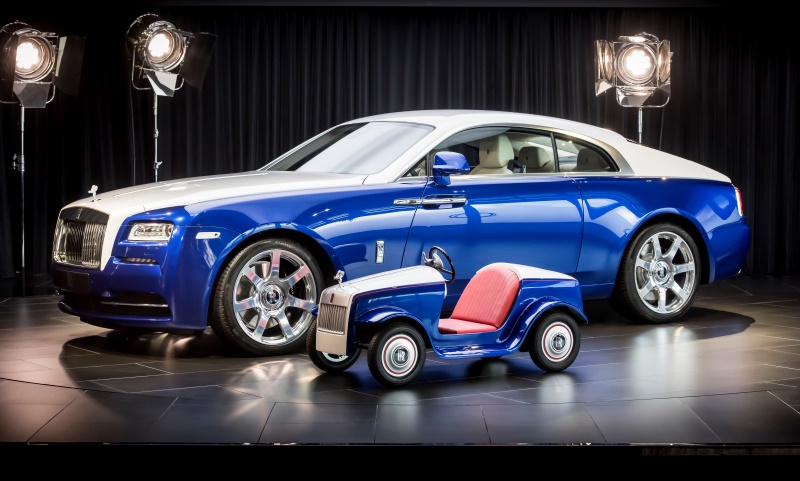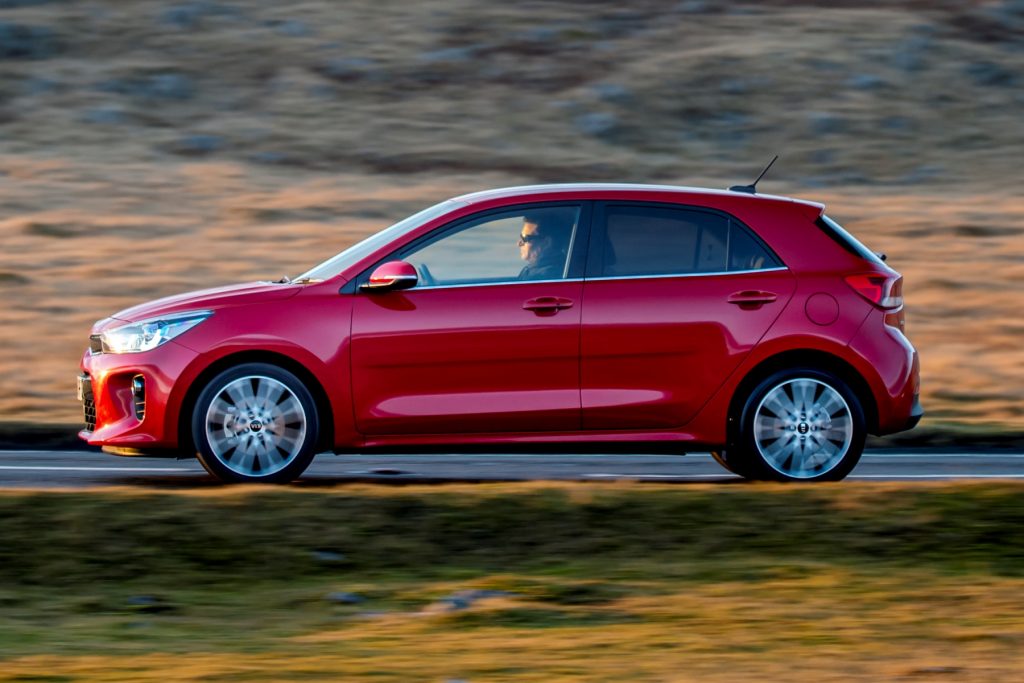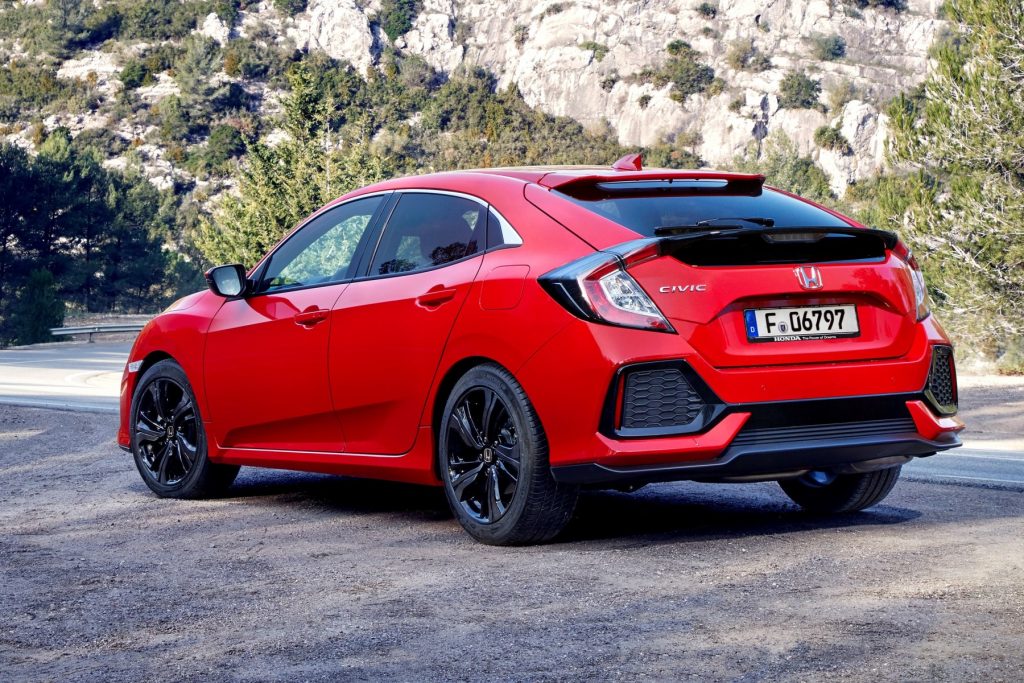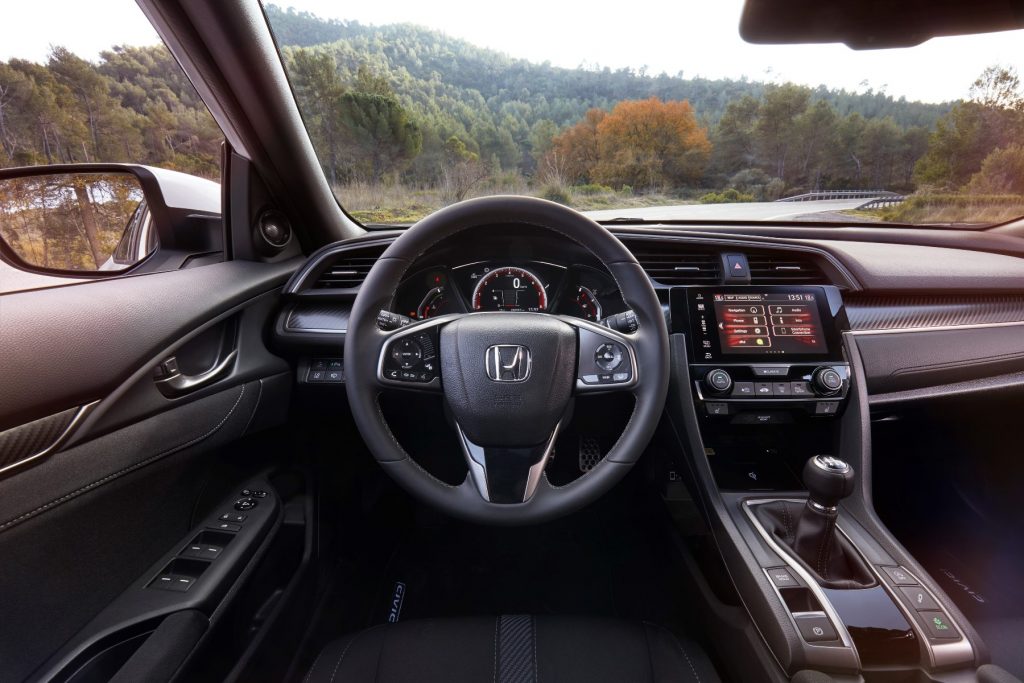Some cars that are seemingly launched without huge fanfare turn out to be surprisingly good. The all-new Kia Rio is just such a vehicle.
Now in its fourth generation, the Rio has the unenviable task of doing battle in a sector, dominated by Britain’s best-selling car for the past eight years – the Ford Fiesta.
Add to that, Vauxhall’s popular Corsa, the new Citroen C3, plus others including the Volkswagen Polo, SEAT Ibiza, Hyundai i20, Skoda Fabia and Audi A1, and it’s clear that to survive these superminis need a USP.
The latest Rio can still fall back on its unbeatable seven-year/100,000-mile (whichever comes first) warranty, which is transferable if the car is sold before the time/mileage limit expires.
However, the good news is that it’s also a good car in its own right, plus it’s competitively priced and has a couple of surprises up its sleeve.
 First, let’s put the Rio into context. In the UK it’s overshadowed by the successful Sportage crossover and cee’d range, but the Rio is actually Kia’s best-selling car globally with sales of some 475,000 a year, accounting for almost one-sixth of the company’s sales.
First, let’s put the Rio into context. In the UK it’s overshadowed by the successful Sportage crossover and cee’d range, but the Rio is actually Kia’s best-selling car globally with sales of some 475,000 a year, accounting for almost one-sixth of the company’s sales.
At first glance the Rio, only available as a five-door, doesn’t look that different to the outgoing car. Look harder and you’ll see that the previous generation’s cute curves have been replaced by sharper lines and smoother surfaces. There’s also a longer wheelbase and bonnet, a lower roofline, a more pert rear end and Kia’s “tiger-nose” front grille is more emphasised..
There’s also plenty of kit available – crucially in the safety field. Kia claims the Rio is the first car in its class to offer Autonomous Emergency Braking with pedestrian recognition, which uses radar and a camera to detect sudden and potentially dangerous braking by a vehicle ahead, and activates the brakes.
At speeds between 5-50mph, it will come to a complete halt, avoiding many potential collisions. It is also able to detect pedestrians who wander into its path and apply the brakes in the same way.
 The fact that this safety technology is available across the range is great news. One day all cars will have AEB as standard.
The fact that this safety technology is available across the range is great news. One day all cars will have AEB as standard.
For now, Kia is offering it as an option on the entry-level car, but standard across the rest of the range, which is better than nothing, but an opportunity missed nevertheless.
A Lane Departure Warning system is also available. It relies on a camera that reads lane marking and senses when the car is about to veer off course without the indicators being activated and warns the driver to take corrective action.
Priced from just £11,995, there are 10 versions of the Rio in three trim grades – badged 1, 2 and 3, plus a limited-run First Edition model, priced at £17,445.
The entry-level 1 specification includes air-conditioning, remote central locking, Bluetooth phone connectivity and steering wheel-mounted controls for the stereo system.
 Upgrading to 2 spec adds a 5-inch touchscreen infotainment system with DAB radio, alloy wheels, leather trim for the steering wheel and gear lever, electric folding wing mirrors, cruise control, reversing camera and autonomous emergency braking.
Upgrading to 2 spec adds a 5-inch touchscreen infotainment system with DAB radio, alloy wheels, leather trim for the steering wheel and gear lever, electric folding wing mirrors, cruise control, reversing camera and autonomous emergency braking.
Go for 3 and the wheels increase in size from 15 to 16-inch, there’s a 7-inch touchscreen with sat-nav, full smartphone connectivity (Apple CarPlay and Android Auto), climate control and faux leather seats (heated up front).
First Edition adds 17-inch alloys, keyless entry and the more powerful 1.0-litre petrol engine with six-speed gearbox.
In terms of engines, the pick of the new Rio range is a 1.0-litre three-cylinder petrol turbo available in two states of tune – 99bhp and 118bhp.
 Kia quotes 68.2mpg for the 99bhp unit, with 102g/km CO2, while the 118bhp engine is capable of 60.1mpg, emitting 107g/km CO2.
Kia quotes 68.2mpg for the 99bhp unit, with 102g/km CO2, while the 118bhp engine is capable of 60.1mpg, emitting 107g/km CO2.
Two other petrols will be offered – 1.25 (83bhp) and 1.4-litre (99bhp) naturally aspirated MPI units – the former is good for 58.8mpg and 109g/km CO2, while the 1.4-litre delivers 56.5mpg and 114g/km with a manual gearbox.
Finally, if you’re after a diesel, a 1.4-litre unit is available with either 76bhp or 89bhp. These are capable of 80.7mpg and 92g/km CO2 and 74.3mpg and 98g/km CO2 respectively.
For added peace of mind, the Rio is also available with Care 3 and Care 3 Plus transferable servicing packages, covering the cost of all routine servicing work for three or five years.
See where I’m going – the Kia Rio is a good package, but here’s the thing… it also drives well.
We drove both versions of the 1.0-litre three-cylinder petrol turbo engine, plus the more powerful 89bhp 1.4-litre diesel.
 Both three-pots are surprisingly swift, punching way above their weight. Yes, you’re aware of the thrum on heavy acceleration, but they soon settle down nicely. The diesel obviously offers more grunt, but again is refined as any diesel in a small car and potentially very frugal.
Both three-pots are surprisingly swift, punching way above their weight. Yes, you’re aware of the thrum on heavy acceleration, but they soon settle down nicely. The diesel obviously offers more grunt, but again is refined as any diesel in a small car and potentially very frugal.
The Rio’s ride is average, but certainly not awful, while its handling if pretty good too. Yes, there’s some body lean in corners if you’re on a mission, but ultimately this is a car that will be driven from A to B fairly gently and it’s no hot hatch, so does it matter? Visibility is good, while the steering is light, making parking and tight manoevers a doddle.
Inside the cabin is pleasant enough with plenty of space, comfortable seats and enough room in the back for full-size adults, which is pretty impressive for a supermini. Yes, it’s not oozing in soft-touch plastics, but it is well put together all the same. Boot space is up by almost 13% compared to the outgoing model to a generous 325 litres, though there is a high load lip and the rear sets down fold down totally flat.
 The instrumentation is clear ahead of the driver, while the 7-inch “floating” touchscreen in the centre console is excellent. Sadly, it’s only available in ‘3’ spec – ‘1’ and ‘2’ have to make do with 3.5 and 5-inch screens respectively.
The instrumentation is clear ahead of the driver, while the 7-inch “floating” touchscreen in the centre console is excellent. Sadly, it’s only available in ‘3’ spec – ‘1’ and ‘2’ have to make do with 3.5 and 5-inch screens respectively.
Verdict: The new Kia Rio isn’t the best car in its class, but it scores highly in a few key areas, including safety, comfort, equipment, engine choice and peace of mind, making it a great all-round package.
The post Kia Rio review appeared first on Automotive Blog.
from Automotive Blog
http://www.automotiveblog.co.uk/2017/02/kia-rio-review/
Looking for a dash cam for your vehicle? Check out Dash Cam Buyers Guide:
http://dashcambuyersguide.com/
from
http://dashcambuyersguide.tumblr.com/post/157240679333















